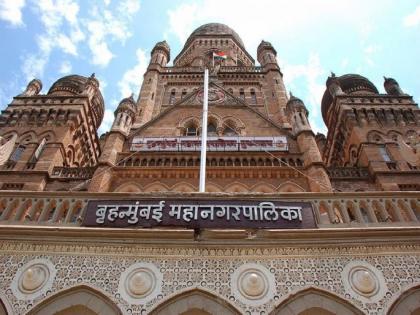Mumbai: No One Knows Who Decided 40x40 feet Was Right Size For Hoardings; New Policy Will Have Global Insights
By Amit Srivastava | Updated: June 19, 2024 15:33 IST2024-06-19T15:33:48+5:302024-06-19T15:33:55+5:30
Following the Ghatkopar incident involving the collapse of a hoarding, the Brihanmumbai Municipal Corporation (BMC) has ceased issuing new ...

Mumbai: No One Knows Who Decided 40x40 feet Was Right Size For Hoardings; New Policy Will Have Global Insights
Following the Ghatkopar incident involving the collapse of a hoarding, the Brihanmumbai Municipal Corporation (BMC) has ceased issuing new permissions and is now developing a revamped policy for their issuance. This decision comes in response to the incident, which has prompted concerns over hoarding safety in Mumbai. As part of the policy review process, BMC officials intend to study digital hoarding regulations implemented in other countries and take environmental considerations into account.
A meeting regarding this matter was held on Tuesday at the civic headquarters in Mumbai, attended by representatives from the Traffic Department, IIT Bombay, and BMC officials. During the meeting, the discussion on the digital hoarding policy focused on eight key points. While representatives from the Traffic Department opposed hoardings near traffic signals and road dividers, the committee is relying on expertise from the Indian Institute of Technology regarding the brightness of the hoardings.
According to a senior civic official who is part of the committee, the digital hoarding models used in Delhi and Kolkata are difficult to follow due to the space crunch in Mumbai. The civic body will also examine policies from other countries. Meanwhile, the civic body will form three sub-committees to look for solutions on Road Safety, Environment Impact and limiting the Brightness of digital hoardings.
The important points on which the draft hoarding policy is likely to be based are as follows:
Study of Other Countries' Digital Hoarding Policies:
The civic body will study the digital hoarding policies of seven countries, including Hong Kong, Japan (Tokyo), and Dubai. While Hong Kong and Dubai have no significant issues with digital hoardings, Japan has implemented restrictions. "There are countries that oppose digital hoardings due to environmental concerns," said the civic official. "We will study the policies of all these countries while preparing our draft policy."
Brightness of Digital Hoardings:
The brightness of digital hoardings is a major concern for the civic body while preparing the draft policy. "Distraction while driving a vehicle also depends on the brightness of the digital hoardings," said the official. The civic body is relying on IIT to limit the brightness. The Traffic Department states that the luminance intensity of digital hoardings should not exceed 85 Cd. However, the department does not have a scientific study to support this limit.
Technical Support for 40 by 40 Meters Hoardings:
After the Ghatkopar incident, where a hoarding larger than 40 by 40 meters collapsed, discussions began on allowing such large hoardings in the city. However, the BMC itself does not have scientific support for hoardings of this size. The committee will seek technical support to determine safe dimensions for hoardings.
Locations:
The BMC has received suggestions from the Traffic Department regarding the locations of digital hoardings. The Traffic Department opposes digital hoardings at traffic signals and road dividers and wants to limit their brightness to prevent accidents. Additionally, digital hoardings will not be allowed near heritage sites, religious places, or educational institutions. However, implementation will be challenging due to the limited space between such locations in Mumbai.
Environmental Aspect:
As digital hoardings generate heat, the civic body will study the environmental impact while preparing the draft policy. The BMC is likely to seek support from IIT for this study.
Moving or Still Videos:
For safety reasons, the civic body will also determine whether to allow moving or still digital hoardings. They will also consider the duration of videos if moving digital hoardings are permitted.
Messages on Digital Hoardings:
The draft policy is likely to specify the types of messages allowed on digital hoardings. "As the digital hoardings will be in public places, the information conveyed should promote public awareness," said the official.
No Publishing After 11 PM:
Currently, digital hoardings are not allowed to operate after 11 PM, and the civic body has taken action against hoardings that violate this rule. The draft policy will also address operating times for digital hoardings.